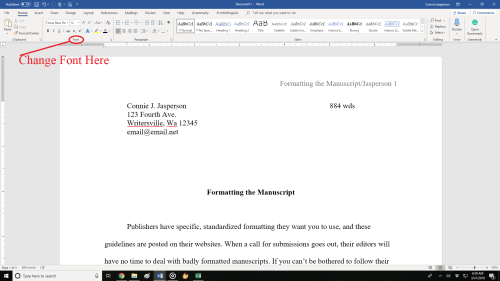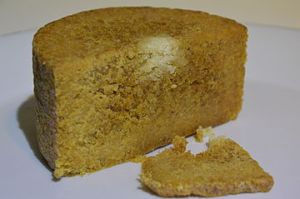In the publishing world, there are several different kinds of editors: line editors, structural editors, submissions editors, and so on. Each does a specific job within the industry. When you look at the annual salaries, you can see that none of these jobs pay well, so it’s clear that, while they like to eat and pay the mortgage as much as any other person, editors in all areas of publishing work in the industry because they love a good story.
 Today we are discussing a particular kind of editor: the submissions editor. When I first began this journey, I didn’t understand how specifically you have to tailor your submissions for literary magazines, contests, and anthologies. Each publication has a specific market of readers, and their editors look for new works their target market will buy.
Today we are discussing a particular kind of editor: the submissions editor. When I first began this journey, I didn’t understand how specifically you have to tailor your submissions for literary magazines, contests, and anthologies. Each publication has a specific market of readers, and their editors look for new works their target market will buy.
I’m just going to lay it out there for you: it’s not worth a publisher’s time to teach you how to be a writer. You have to learn that on your own.
So, if magazine editors aren’t going to edit your work, what does the editor for that publisher do? Magazine editors look for and bring new and marketable stories to the reading public.
Marketable is the keyword. If your submission doesn’t fit what that magazine’s readers expect, the editor will reject it.
 The quality of your work isn’t the problem, and you have selected a publication that features work in your chosen genre. But your subgenre may not match what the readers of that publication want to see. After all, both spaghetti Bolognese and bruschetta are created out of ingredients made from wheat and tomatoes, but the finished meals are vastly different.
The quality of your work isn’t the problem, and you have selected a publication that features work in your chosen genre. But your subgenre may not match what the readers of that publication want to see. After all, both spaghetti Bolognese and bruschetta are created out of ingredients made from wheat and tomatoes, but the finished meals are vastly different.
A person who craves spaghetti Bolognese won’t be satisfied with an offering of bruschetta despite the fact they both feature wheat and tomatoes. The genre may be Italian, and they feature the same ingredients. But the delivery method is a subgenre that may not appeal to every diner.
Editors for contests and large publishers of books do the same—they find and bring work they enjoy to the public in specific genres. If your story makes it through the publisher’s door and into the first part of their process, their editor may ask you for minor revisions, small things you may have missed when self-editing.
But they won’t offer you technical advice.
This is because they shouldn’t have to. Before submitting your work to an agent or submissions editor, you must have the technical skill down.
For the indie author, magazines, contests, and anthologies are the most logical places for getting their names out to the reading world. You must ensure you have a clean manuscript that is marketable to the readers of the publication you are courting. You may need to have someone in your writing group proofread it before submitting it.
Professionals do the required work and don’t think twice about it—self-editing and proofreading are just part of the job.
 Some hobbyists expect special consideration and are offended when they don’t get it. Egos are rampant in this business, but in reality, no one gets to be treated like a princess.
Some hobbyists expect special consideration and are offended when they don’t get it. Egos are rampant in this business, but in reality, no one gets to be treated like a princess.
Prominent publications have wide readerships. The more people who read and enjoy a short piece by you, the more potential readers you have for your novels. These people likely read books, and guess what? They might look for your novels when shopping for books at Amazon, Barnes & Noble, and other digital booksellers.
When you have a great story that you believe in, you must find the venue that publishes your sort of work. Know your genre. If you write fantasy, google magazines featuring fantasy and sci-fi. A good place to start would be the website Worlds Without End, an author resource site listing magazines that publish fantasy and science fiction.
Not all publications will be accepting new work, but some will. Be warned—finding magazines with open calls for submissions is a lot of work.
Anthologies with open calls might be more plentiful, but you have to know how to find them. Make connections through the many writers’ forums on Facebook and other social media platforms.
If you haven’t any short work ready for submission but would like to write something, do some research before setting pen to paper. Buy magazines, read them, and write to those standards.
For those of us who can’t afford to buy magazines, you can go to websites like Literary Hub and read excellent pieces culled from various literary magazines for free. This will give you an idea of what you want to achieve in a story and where you might consid er sending your work.
er sending your work.
Go to the publisher’s website, find out their submission guidelines, and FOLLOW THEM. (Yes, they apply to EVERYONE, no matter how famous, even you.) If you skip this step, you can wait up to a year to hear that your manuscript has been rejected, and they most likely won’t tell you why.
Formatting your manuscript is crucial. When the editor of a contest, publication, or anthology opens the call for submissions, they will get hundreds of entries, perhaps thousands. Their editors will have no time to deal with badly formatted manuscripts when a call goes out.
Editors are only one person, and they want to read every submission. Publishers have specific, standardized formatting they want you to use, and these guidelines are clearly posted on their websites.
Time is always of the essence in the publishing world. Publication dates are set well in advance and must be adhered to. Unfortunately, some great stories won’t even be read out of all the entries they receive. This is because the author didn’t format the manuscript in the way the submission rules stated.
Expediency kicks in. If the first page shows the manuscript is not formatted to industry standards, the editor will reject it and move on to the next submission.
A few simple formatting rules are universal to most publications. You should ensure the font is Times New Roman .12 or Courier .12 font and the body of the manuscript is aligned left.
- 1 in. margins
- Double-spaced
- 1 space after each sentence (NOT 2 as we dinosaurs were taught in typing class)
- Each page is numbered in the upper right-hand corner
- Has formatted indented paragraphs (DO NOT USE THE TAB TO INDENT!)
- The header contains the title and author’s penname
- The first page includes the author’s legal name, mailing address, and phone or email contact information in the upper left-hand corner
 Please, if you consider yourself a professional, format your submissions properly. You want to stand out but getting fancy with your final manuscript is not the way to do that—you will be rejected out of hand if you don’t make this effort.
Please, if you consider yourself a professional, format your submissions properly. You want to stand out but getting fancy with your final manuscript is not the way to do that—you will be rejected out of hand if you don’t make this effort.
Below are the links to two posts (with screenshots) detailing how to make your manuscript submission-ready:
Formatting Short Stories for Submission
You have to keep trying, keep improving as an author, and keep believing in yourself and in your work. Most importantly, you must never give up.

















